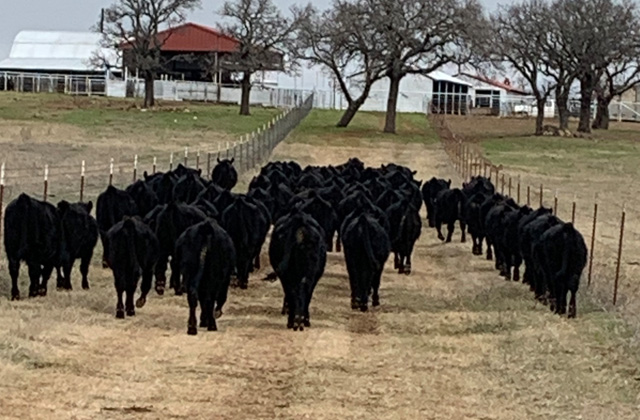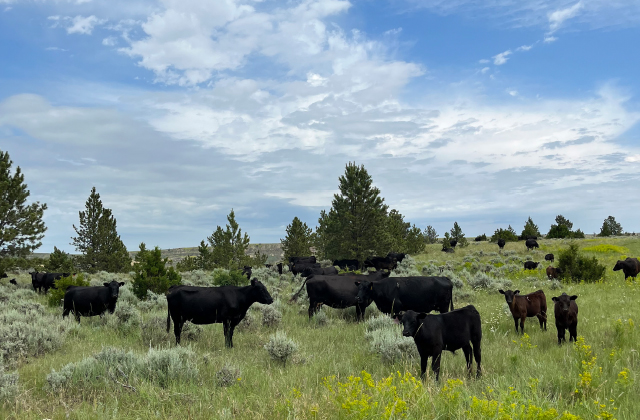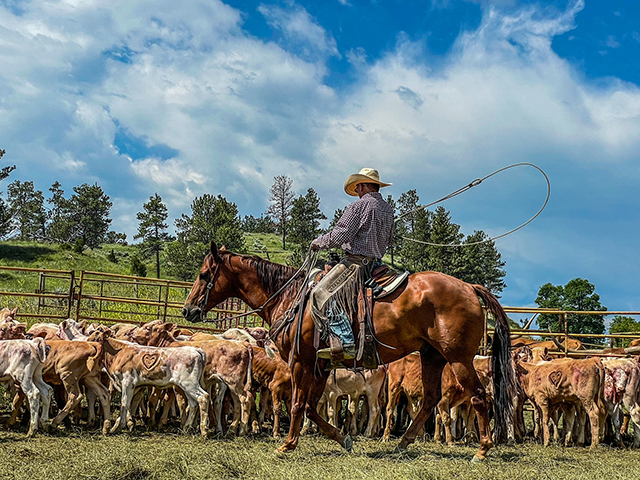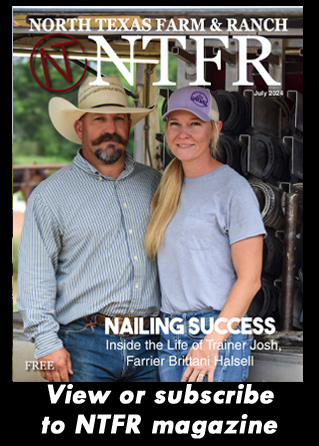Farm & Ranch
Meanwhile, Back at the Ranch…

By Rayford Pullen | [email protected]
Is spring yet? If you are like me, this seems like the longest winter we have ever had. When spring does arrive in full force, it will be a photo finish regarding our hay inventory and the emergence of green grass.
With the winter we have had, regarding costs, this has also been the most expensive when it comes to the price of hay and feed. Happiness is winter in our rearview mirror around here.
Spring will arrive this month in most parts of Texas, and with it will come new calves and breeding decisions.
Those cows that made it through the winter are probably in fair to decent shape and will need a month or so of great grazing to get back in shape, while they are also nursing a calf.
In the case of first calf heifers, they are trying to grow and put on weight without their permanent incisors.
These young females are asked to do a lot and may need a little extra help, nutrition wise, to get rebred on time and continue calving during the target months. Around here, if a heifer is born in February or March, we expect her to calve at age two in the same month she was born. It does not always work out, but that is our goal.
With bull turn out for spring calving cows and heifers being mid-April to mid-May, we certainly hope and expect them to be gaining weight and be in shape to conceive as early in the breeding season as possible.
To read more, pick up a copy of the March issue of NTFR Magazine. To subscribe call 940-872-5922.
Farm & Ranch
Ag Elsewhere: Wyoming

By Tressa Lawrence
Ranchers across northeast Wyoming and the surrounding areas saw record moisture levels in 2023. The year 2024 has seen significantly less moisture to date.
Farm & Ranch
Ag Elsewhere: Montana

By Lindsey Monk
People are finishing up brandings. Here, Danny Walter is shown getting it done.
Farm & Ranch
Animal Disease Traceability

By Barry Whitworth, DVM
On July 6, 2020, the United States Department of Agriculture Animal and Plant Health Inspection Service (APHIS) posted in the Federal Register a proposal that radio frequency identification tags be used as official identification for cattle and bison. Following a period for public comment, the USDA APHIS released a statement on April 24, 2024, with the amended animal disease traceability (ADT) regulation for cattle and bison. The full press release may be found at https://www.aphis.usda.gov/news/agency-announcements/aphis-bolsters-animal-disease-traceability-united-states. Under the new rule, cattle and bison will need to be identified with tags that are both visual and electronic.
The USDA defines ADT as knowing where diseased and at-risk animals are, where they have been, and when the animal disease event took place. A system that allows for efficient traceability of livestock in the United States is essential for animal health and reducing the economic effect of a foreign animal disease outbreak and other diseases on livestock producers as well as others whose well-being depends on livestock production.
To read more, pick up a copy of the July issue of NTFR magazine. To subscribe by mail, call 940-872-5922.
-

 Country Lifestyles1 year ago
Country Lifestyles1 year agoScott & Stacey Schumacher: A Growth Mindset
-

 Country Lifestyles7 years ago
Country Lifestyles7 years agoStyle Your Profile – What your style cowboy hat says about you and new trends in 2017
-

 Equine10 months ago
Equine10 months agoThe Will to Win
-

 HOME7 years ago
HOME7 years agoGrazing North Texas – Wilman Lovegrass
-

 Country Lifestyles4 years ago
Country Lifestyles4 years agoAmber Crawford, Breakaway Roper
-

 Outdoor9 years ago
Outdoor9 years agoButtercup or Primrose?
-

 Country Lifestyles8 years ago
Country Lifestyles8 years agoDecember 2016 Profile, Rusty Riddle – The Riddle Way
-

 Country Lifestyles8 years ago
Country Lifestyles8 years agoJune 2016 Profile – The man behind the mic: Bob Tallman






